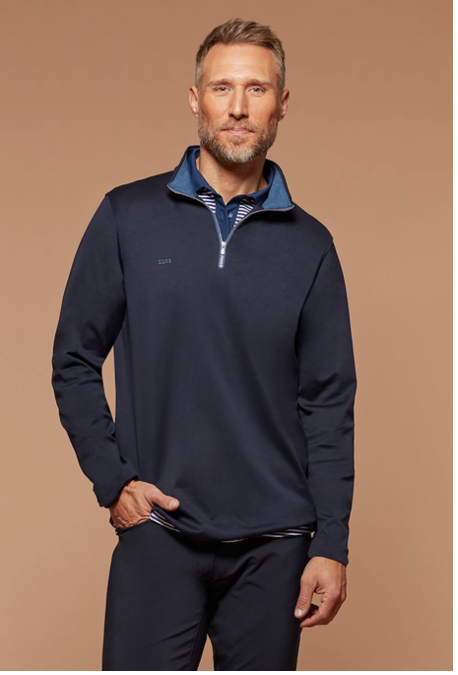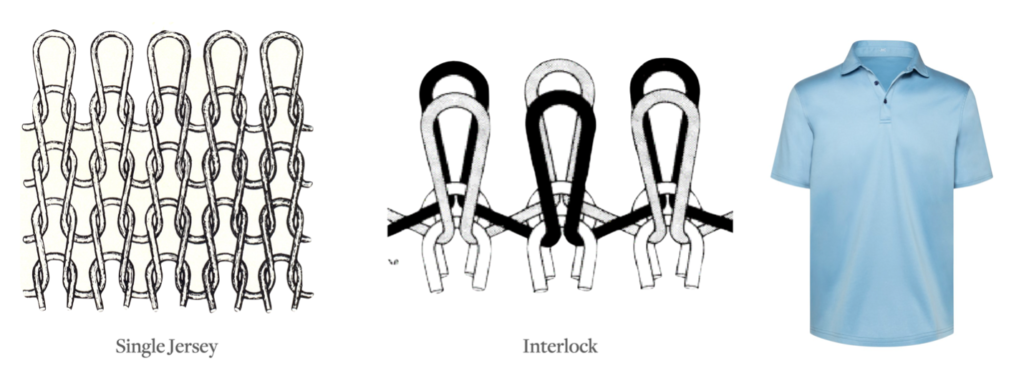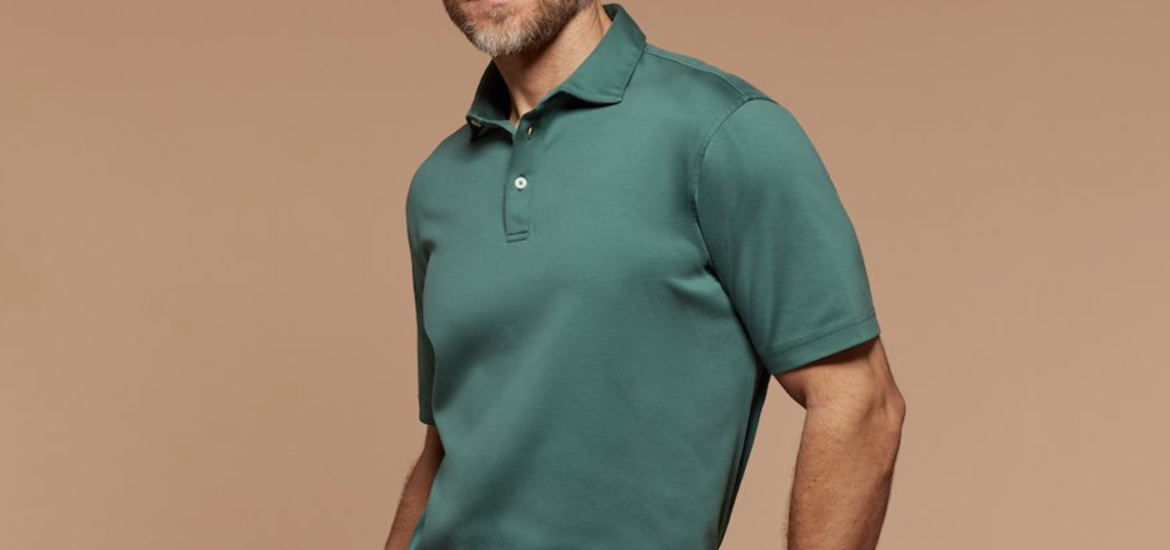As we adapt custom-made clothing to the modern lifestyle, we have introduced many new categories in our menswear lineup, paving the way to a stylish wardrobe that works for our Clients season after season. Simply put, we occupy a unique niche when it comes to custom-made menswear, which extends well beyond the expected categories of suiting and shirting. We strive to make our custom-made clothing accessible to all, with pricing that can fit every type of budget.
One of our latest challenges has been introducing the knits category as an integral part of the J.Hilburn custom-made offering, partly because knits like tees and polos are typically viewed as off-the-rack commodities. In the average consumer’s mind, casual pieces from underwear to designer tees can be found almost everywhere in the marketplace.

The knit fabrications we currently offer are a big part of what differentiates us today, combined with our perfected, individual fit and of course, the multiple options that can be selected to build each style one by one, personalized unlike anything else on the market. Our fabrics have been developed and selected to sit seamlessly and coordinate perfectly with our Italian suiting and shirting, with an unwavering focus on exceptional quality for every item in his wardrobe.
Thinking of how a guy wears his knit, I wanted to draw focus to the knit fabrics that we currently offer and how they can be integrated effortlessly into the modern J.Hilburn wardrobe. This week I am deep-diving into interlock, with upcoming weeks devoted to other qualities in the collection.

Our cotton interlock, like all of our knit materials, is produced on very large knitting machines with micro needles that create a tiny stitch repeated millions of times, row after row, to create the rolls of knit jersey fabric we use for custom-made knits. The high quality of the cotton we use and the exact tension of the machinery all ensure the highest quality in our phenomenal knit cloth. “Interlock” describes this particular knit stitch, which is a key factor in why this fabric looks and feels so special. The interlock stitch is not a mass manufacturer’s first choice due to the higher cost of producing it, and it is rare to find. Most knits you see all over the market are knitted with a front and back side, with the characteristic “v” motif at the front and the loop as the back of the stitch. This difference is very apparent when looking at a close-up photo of this plain stitch in almost any wool sweater you may own—you can see the front and back of the jersey’s “plain stitch,” as it is called, quite clearly. In contrast, an interlock machine knits the tiny needles on both sides of the facing, creating a knit with a double front and a more compact knit that offers much more coverage than a plain knit would. Due to its double face, this stitch takes longer to make, and the slowness with which it is manufactured adds to its cost, making it prohibitive for brands who are looking for lower-cost manufacturing. |

The double-layer construction makes the fabric’s color appear richer, with more depth and luster. It also drapes slightly better, falling less on the curves of the body for a more forgiving silhouette. These characteristics make interlock look much dressier than a knit usually would. It isn’t just any knit that will look nice when worn under a sportcoat, but interlock has a polish and cleanliness that works perfectly for this purpose. The layer of solid color under a sportcoat or outerwear layer feels slightly special and uncommon in a way that has a luxury appeal, even as a knit.
That said, guys have discovered this cloth as being extremely practical and have found that this polished look works nicely beyond polos—for example, as shirt-front styles or as lightweight summer knits (think cardigan alternative) with a zip front.
I have personally discovered it works beautifully as a refined tee-shirt that is much dressier than any other cotton tee, working really well for that clean crew look that I enjoy wearing as a polo alternative. It behaves amazingly well through washing and always keeps a clean, smart appearance. When you wear interlock fabric in a polo style, it stands out smartly and with the addition of a few personal touches, it looks like the type of polo you can only find at the designer level, probably with a “dry clean only” label and a price tag that would exclude most of us. It really is remarkable that we can offer a garment of this quality and appearance, custom-made to fit each Client, and often at a lower price point than an off-the-rack designer piece.

